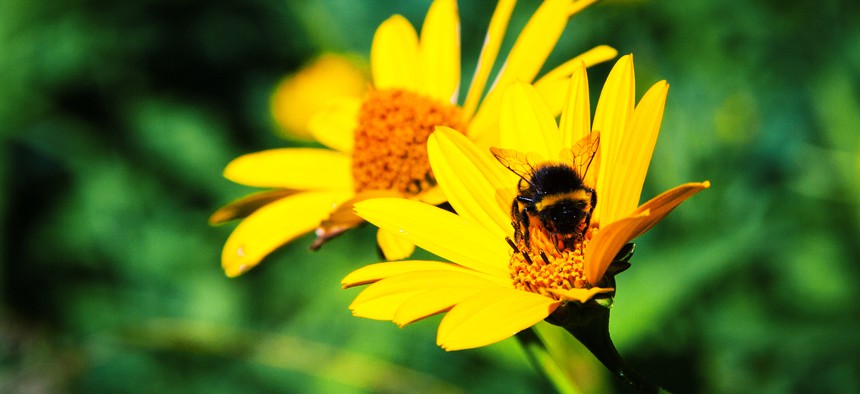Paying Homeowners to Transform Yards Into Bee-Friendly Habitats

The program aims to protect a variety of pollinators but gives special weight to areas where the rusty patched bumble bee, an endangered species, is thought to live. Shutterstock

Connecting state and local government leaders
The "Lawns to Legumes" program, approved by legislators in Minnesota, will reimburse homeowners who plant wildflowers and other pollinator-friendly plants in their yards.
Homeowners in Minnesota can receive money from the state to add bee-friendly plants to their yards under a provision signed into law last week by Gov. Tim Walz.
The “Lawns to Legumes” program, tucked into a sweeping environmental program funding bill, will provide $900,000 in one year to cover most of the cost of turning traditional residential lawns into pollinator habitats. To be eligible, yards must be planted with “native vegetation and pollinator-friendly" flowering plants and legumes, including dutch white clover, creeping thyme and various wildflowers and grasses.
“New research shows that cities can play a key role in pollinator preservation,” state Rep. Kelly Morrison, a Democrat and the bill’s lead sponsor, said in a statement. “We need to protect our environment and abundant wildlife with science-based solutions so they can be enjoyed by future generations."
The program aims to improve pollinator populations in general, but grants special weight to the rusty patched bumble bee, an endangered species (and, courtesy of the omnibus bill, now the state bee of Minnesota).
Homeowners can receive grants to cover up to 75 percent of replanting projects, increasing to 90 percent if their property sits in a zone that the U.S. Fish and Wildlife Service identified as having a “high potential” for housing rusty patched bumble bees.
The program, a one-time appropriation, is funded by the Board of Water and Soil Resources through the state’s Environmental and Natural Resources Trust Fund. The board is tasked with establishing criteria for the application and grant-awarding process, which will begin this summer. Later this year, funding will be distributed to “local conservation partners,” which will then disseminate payments to individual homeowners (priority will be given to people who reside in areas where the rusty-patched bumblebee is known to live). Planting projects will most likely begin in 2020, according to the board’s website.
Most legislative action taken to protect pollinators is done at the state level, according to a study from the University of Missouri that catalogued relevant policies enacted from 2000 to 2017. Just four bills were passed by federal legislators in that time period, while legislatures in 36 states enacted 109 policies, according to the report, published earlier this year.
Minnesota ranks as one of the most pollinator-friendly of those states. Legislators there had previously established a pollinator protection committee and passed legislation encouraging the use of non-harmful pesticides, adopting stricter labeling practices for retail garden plants and requiring the creation and protection of pollinator habitats along highways.
To adequately tackle the problem, states should consider tracking bee populations the same way they track populations of other at-risk wildlife, said Damon Hall, an assistant professor at Missouri's School of Natural Resources and the College of Engineering and the study’s lead author.
"We are seeing encouraging policy innovations, but there is no momentum in state legislatures to adequately monitor this crisis," he said in a statement. "Wild pollinating insects, like native bees, are wildlife to be managed like any other kinds of wildlife, and that means we need data to track population declines and to start experimenting with different types of land-use programs. Without data, we don't have answers because we don't know which questions to ask, and without a legislative push to fund that data collection, we are spinning our wheels.”
Kate Elizabeth Queram is a Staff Correspondent for Route Fifty and is based in Washington, D.C.

NEXT STORY: Foster Care Crisis Opens Door to Second-Chance Parents




